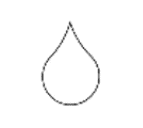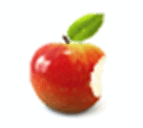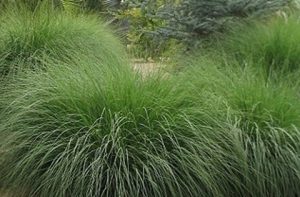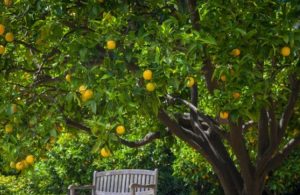We love to mix things up in our gardens, but there are a number of plants we tend to bring into a lot of our sites. If it ain’t broke, don’t fix it! Here are a few examples of plants we keep coming back to:

Yarrow: Achillea millefolium
This dependable native has soft, feathery leaves shaded by umbrellas of tiny flowers, which bloom all summer and into fall. It is great for pollinators, accumulates soil nutrients, and provides a number of medicinal uses. It also comes in a variety of colors to match any landscape. To ensure a full life and tidy appearance, trim back as needed, usually after bloom.
Plant Size: 1-2′ tall and wide
California Lilac: Ceanothus spp.
A native shrub available in every shape and size. Waxy evergreen leaves are adorned with dense puffs of lilac colored flowers in early spring, providing essential pollinator habitat when not much else is blooming yet. Great as an accent, groundcover or for screening. Place where it can express itself as it does not favor pruning. Variety shown here is ‘Joyce Coulter’.
Plant Size: 3′ tall and 5′ wide

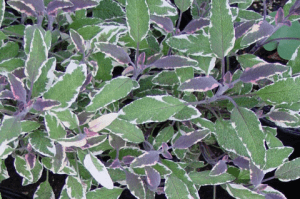
Tricolor Sage: Salvia officinalis
A beautiful variegated version of culinary sage, which can be used either fresh or dry. Grows in low, spreading clumps and sends up purple flowers in spring and early summer, which are a favorite for many pollinators. This plant makes a great border for any garden, especially when mixed with other herbs. It is prone to rot if it stays too wet, so will last the longest in well drained soil.
Plant Size: 1-3′ tall & wide
California Fescue: Festuca californica
This small grass brings lovely blue-gray shades to the garden. A native that is very low maintenance, although fairly short lived. Group in mass for the best effect. It provides great habitat for beetles and seeds for birds. To promote a longer life, clean dead foliage by hand as needed, usually about twice a year.
Plant Size: 2-3′ tall & wide
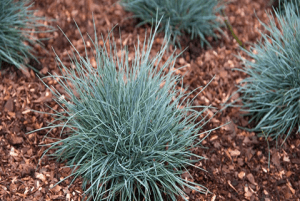
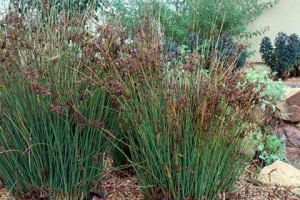
CA Grey Rush: Juncus patens
An evergreen native that forms erect clumps of deep blue-green, round spears. One of the best plants for rain gardens, it thrives in boggy wet soil but is also very tolerant of dry summers. Looks best with occasional deadheading of old growth, and doesn’t mind a little irrigation in the summer either, although it will survive without once established.
Plant Size: 12-18″ tall & wide
Beardtongue: Penstemon spp.
Evergreen foliage and nearly year-round blooms in many enticing colors, magenta to electric blue, make this a favorite filler plant. The tubular flowers mean that hummingbirds love it! Once established, it will prosper in low fertility soil with little summer water and can take full sun to partial shade.
Plant Size: 2′ tall and wide
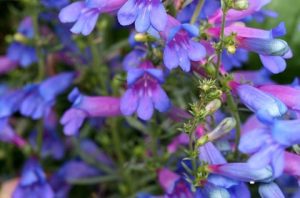
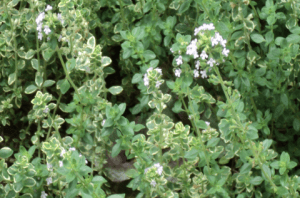
Thyme: Thymus spp.
Elfin-sized leaves and stems weave a springy mat that does well as a lawn subsitute. Taller varieties are best for cooking, although creeping varieties taste okay too. Flowers form a lovely summertime icing of purple, pink or white and are loved by bees. For the plant to live its longest, trim back 1/3 per year after bloom.
Plant Size: 2-3″ tall and 1′ wide
Sticky Monkey Flower: Mimulus aurantiacus
This native is a spring and summer show stopper, with loads of salmon-orange flowers attracting pollinators. A perennial evergreen with dark waxy leaves that benefit from occasional pruning to refresh growth. Hybrid varieties sometimes maintain fuller foliage with less trimming. Also a favorite for hummingbirds and bees.
Plant Size: 2′-3′ tall & wide
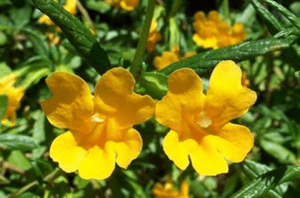

Purple Spreader Verbena: Verbena x hybrid
A low maintenance and high impact groundcover blanketed with bright purple flowers through most of the early spring and late summer. This plant also comes in a variety of other colors, however purple is a favorite for butterflies. Very low maintenance, with some varieties like Superbena not even needing deadheading.
Plant Size: 6″ tall and 2′ wide
California Fuschia: Epilobium Canum
Like little firecrackers, these orange-red flowers explode over sage foliage throughout summer and early fall, attracting hummingbirds and bees. Can be kept attractive with light pruning as a groundcover. Nice when coupled with purple flowered perennials.
Plans Size: 1′ tall x 2′ wide
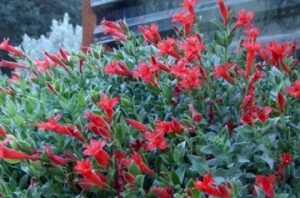
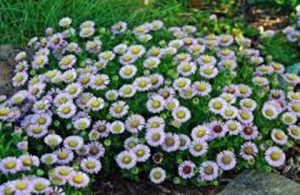
Seaside Daisy: Erigeron glaucus
This sweet little evergreen native has flat, pink, daisy-like flowers that the bees love to take a nap in. Low-growing and tolerant of poor soils, it provides an excellent groundcover. Can take some shade in more inland climates. Blooms nearly year round.
Plant Size: 1′ tall x 2′ wide
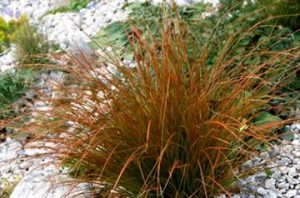
Sedges: Carex spp.
Most sedges grow as cascading mounds of narrow leaves that can be many shades of green to coppery orange in the summer. They grow well on the borders of rain gardens and can take seasonal wet conditions. Provides good hide outs for beneficial insects and beetles!
Plant Size: 2′ tall & wide
Cleveland Sage: Sativa clevelandii
This native shrub has grey-green leaves and whorls of lavender flowers in summer that are a favorite for hummingbirds. Strongly scented. Good for use as an accent plant or to tie in sage look through garden. Easy to grow and maintain, simply needs deadheading post flowering.
Plant Size: 3-4′ tall & wide
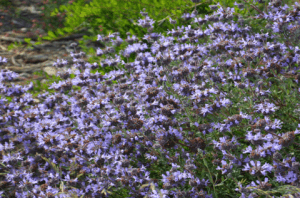

Coffeeberry: Rhamnus californica
A dense and round evergreen native shrub with big berries that resemble coffee. The fruit contains laxative properties and has long been used medicinally but IS NOT EDIBLE. Provides a wonderful shape and density for a hedge or screening. Can handle light pruning for shaping.
Plant Size: 6′ tall & wide
Toyon: Heteromeles arbutifolia
This California native is also known as Christmas berry for its evergreen foliage and bright red berries in the winer. Low maintenance and great near a window for bird watching, as its berries are a favorite winter food for wildlife. Fun fact: this plant is the namesake of Hollywood!
Plant Size: 10-20′ tall

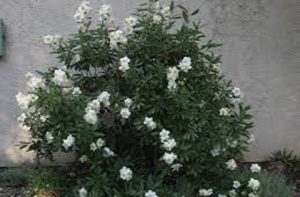
Bush Anemone: Carpinteria californica
This evergreen California native shrub boasts beautiful white flowers with yellow centers, making it a great replacement for the thirsty Camellia. Drought tolerant and hardy, it can thrive in full sun to part shade, making an excellent screen.
Plant Size: 6′ tall & wide
Manzanita: Arctostaphylos spp.
These native evergreens have twisting mahogony red to brilliant orange branches and delicate clusters of bell shaped flowers that are a big hit with bees. Prefer well drained rocky soils, but are very low maintenance once established. Can be found in upright or trailing varieties.
Plant Size: 1-12′ tall & 4-10′ wide
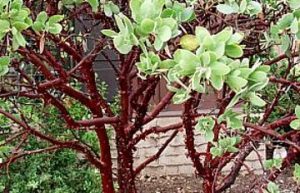

Currant: Ribes spp.
A wandering deciduous perennial that can persist in part sun to shade, currants are a great option for understory. Attractive cascades of flowers come in many colors from red and pink to yellow, producing sweet-tart fruit, ripe in midsummer. Upright, sparse, vase-like form that needs pruning to stimulate new growth post fruiting.
Plant Size: 6′ tall & 4′ wide
Pineapple Guava: Feijoa sellowianna
A very low-maintenance evergreen shrub with showy edible flowers and gray-green foliage. Provides edible fruit with unusual tropical flavor. Nice multi-functional replacement for box hedges, or can be trained as a tree or for screening.
Plant Size: 6-8′ tall & wide
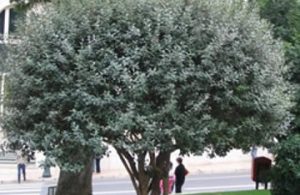

Persimmon: Diospyros kaki
Persimmons are a winter delight. Two types: apple shaped fruit (fuyu, seen here) can be eaten when still crunchy, while acorn shaped varieties (hachiya) should be eaten when very soft and ripe, almost gelatinous, or cooked or dried. Has brilliant seasonal color. Hardy and not prone to disease.
Plant Size: 20-30′ tall
Pomegranate: Punica granatum
Pomegranates can really handle drought once established. Large luscious fruit are ripe in late fall, early winter. A deciduous shrub, new growth appears bright red orange at first, then turning green, making it a great accent. Full in form it can be pruned up as a tree or kept as a smaller shrub.
Plant Size: 8-12′ tall
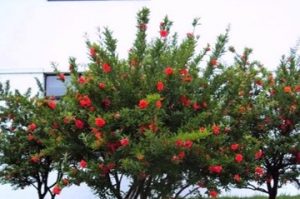

Fig: Ficus carica
A beautiful deciduous tree with twisting form, can be used as an accent in a garden providing deep shade with large palmate leaves, or bare sculptural trunk in winter. Figs can bear two crops of sweet fruit/year (depending on variety) and are easy to care for. Can be kept small with pruning but will get large if allowed.
Plant Size: 8-30′ tall
Yerba Buena: Satureja douglasii
The crushed leaves of this native mint smell incredible! A low-growing ground cover, whose tendrils do not invade the garden like a true mint. Great for use understory or along rocky pathways as it can handle light trampling. Wonderful in tea.
Plant Size: 3″ tall by 2′ wide
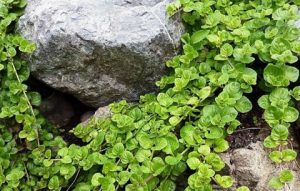
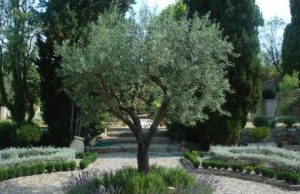
Olive: Olea europea
This Mediterranean native adds both form and function to the garden with its evergreen sage leaves. Found in many varieties including small shrubs. The fruit is edible if processed and can be a little messy near a street or sidewalk. Great for screening, beautiful in the wind or to create a shady spot.
Plant Size: 4-30′ tall
Elderberry: sumbucus spp.
This charismatic CA native is drought tolerant but doesn’t mind having its feet wet. The berries can be eaten raw in small quantities (can cause stomach upset), but are delicious and medicinal when cooked into syrup, wine, jam, or tincture. While this plant contains many medicinal qualities, the leaves, green fruits and stems are toxic when eaten. This is also a great wildlife plant, attracting pollinators and birds to its 10-15’ tall, shrubby upright form.
Plant Size: 10-15′ tall and wide

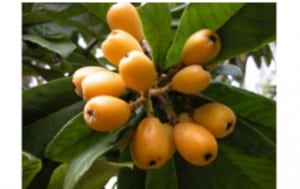
Loquat: Eriobotrya japonica
This drought tolerant evergreen tree produces fruit that look and feel like apricot and that taste like a cross between cantaloupe and cherry drizzled with lime. With flowers in fall or early winter, fruits come as a welcome addition to a late winter diet. For those who are space limited, this typically small tree can also be planted in large containers.
Plant Size: 10-25′ tall and wide





